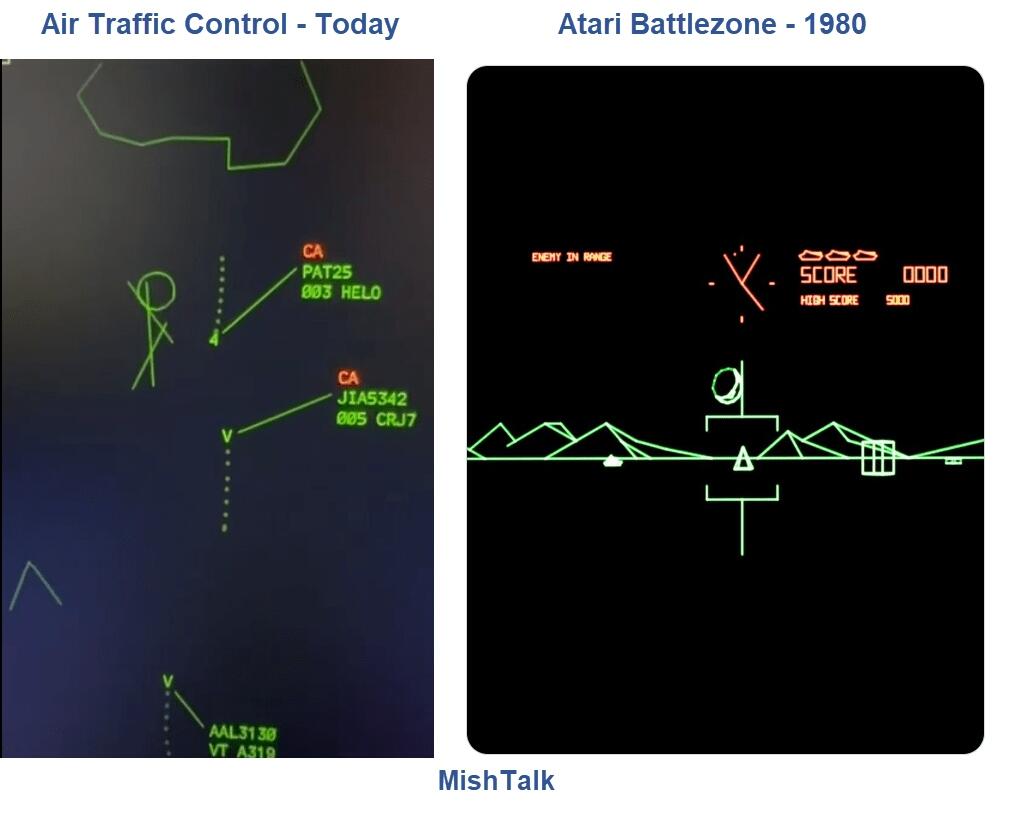I Don’t Know Where You Are: The Urgent Need To Modernize Air Traffic Control

Table of Contents
The Current State of Air Traffic Control: A System Under Strain
Our current air traffic management system largely relies on radar technology, a system developed decades ago. While effective in its time, this radar-based approach struggles to cope with the exponential growth in air traffic, particularly in congested airspace around major airports. The limitations are significant:
- Inability to Handle High-Density Traffic: Radar systems often struggle to accurately track aircraft in close proximity, increasing the risk of near-misses and potential collisions, especially in complex airspace environments. This limitation is exacerbated by increasing numbers of smaller, less easily detectable aircraft.
- Communication Delays and Human Error: Communication between air traffic controllers and pilots can be delayed or hampered by outdated technology. In high-pressure situations, even small delays can have significant consequences. Human error, while always a factor, is magnified by the strain placed on controllers by the limitations of current systems.
- Weather Dependency: Adverse weather conditions, such as heavy rain or snow, can significantly reduce the effectiveness of radar, leading to flight delays and cancellations. This uncertainty makes efficient scheduling and routing extremely difficult.
The consequences of these limitations are far-reaching:
- Increased flight delays and cancellations
- Higher fuel consumption and associated carbon emissions due to inefficient routing
- Increased risk of near misses and potential accidents
- Rising operational costs due to inefficiencies
The Benefits of Modernizing Air Traffic Control: Enhanced Safety and Efficiency
Modernizing air traffic control offers a compelling path toward enhanced safety, greater efficiency, and reduced environmental impact. The integration of advanced technologies promises a significant leap forward.
-
Improved Situational Awareness: Technologies like Automatic Dependent Surveillance-Broadcast (ADS-B) provide more precise and continuous location data from aircraft, offering air traffic controllers a far clearer and more detailed picture of the airspace. This increased situational awareness allows for more efficient separation of aircraft, minimizing the risk of conflict. NextGen, the U.S. initiative to modernize the National Airspace System, incorporates similar improvements.
-
Data-Driven Optimization: Data analytics plays a crucial role in predicting potential conflicts and optimizing flight paths. By analyzing vast amounts of data, systems can identify potential hazards and proactively suggest safer and more efficient routes, leading to shorter flight times and reduced fuel consumption.
-
Enhanced Communication: Improved communication systems facilitate seamless collaboration between air traffic controllers and pilots. Real-time data sharing, clearer communication channels, and improved data visualization tools contribute to a safer and more efficient operating environment.
The benefits extend beyond safety:
- Improved safety through more accurate and timely information
- Increased efficiency leading to shorter flight times and reduced delays
- Reduced fuel consumption and carbon emissions
- Cost savings through improved operational efficiency
- Enhanced passenger experience due to smoother and more reliable flights
Specific Technologies for Modernization: ADS-B, NextGen, and Beyond
Several key technologies are driving the modernization of air traffic control:
-
ADS-B (Automatic Dependent Surveillance-Broadcast): This technology allows aircraft to transmit their precise location, speed, altitude, and other critical information directly to air traffic controllers and other aircraft. This eliminates reliance on ground-based radar for tracking, providing more accurate and timely data.
-
NextGen (Next Generation Air Transportation System): This comprehensive U.S. initiative aims to integrate various new technologies, including ADS-B, to create a more seamless and efficient air traffic management system. Its principles are being adopted globally.
-
Data Analytics and Artificial Intelligence: Advanced data analytics and AI algorithms are increasingly used to predict potential conflicts, optimize flight paths, and automate certain tasks, freeing up air traffic controllers to focus on more complex situations.
While these technologies offer significant advantages, their implementation presents challenges:
- Significant initial investment in infrastructure upgrades.
- The need for widespread adoption and standardization across different countries and air navigation service providers.
Addressing the Challenges: Funding, Collaboration, and Regulation
Modernizing air traffic control requires a significant financial investment to upgrade infrastructure, implement new technologies, and train personnel. This necessitates:
- Securing substantial government funding for modernization projects.
- Innovative public-private partnerships to leverage expertise and resources.
International collaboration is paramount. Air travel is inherently global, and inconsistencies in technology and regulations across different countries can create significant safety and efficiency issues. This necessitates:
- Establishing international standards and protocols for new technologies.
- Harmonizing regulations to accommodate the implementation of new systems.
- Facilitating seamless data exchange between different air navigation service providers.
Finally, effective implementation requires:
- Comprehensive training programs for air traffic controllers to effectively utilize new systems and technologies.
- Robust cybersecurity measures to protect the integrity and security of the modernized ATC system.
The Urgent Call to Action: Modernizing Air Traffic Control for a Safer Future
The evidence is clear: our current air traffic control systems are struggling to keep pace with the demands of modern air travel. Failure to modernize air traffic control risks jeopardizing safety, efficiency, and environmental sustainability. The benefits—enhanced safety, increased efficiency, reduced emissions, and cost savings—are undeniable. We must act now. We urge readers to advocate for increased investment in, and the timely implementation of, modern air traffic control systems. Government agencies, aviation industries, and international organizations must collaborate to ensure the swift and effective transition to safer and more efficient air traffic management. Learn more about modernizing air traffic control initiatives in your region and join the call for a safer, more efficient, and sustainable future for global air transportation. The safety and efficiency of our skies depend on it.

Featured Posts
-
 Shea Langeliers Home Run Propels Athletics To Win Against Mariners
May 07, 2025
Shea Langeliers Home Run Propels Athletics To Win Against Mariners
May 07, 2025 -
 Jenna Ortegas Appearance A Decade Older Than Before Public Opinion Divided
May 07, 2025
Jenna Ortegas Appearance A Decade Older Than Before Public Opinion Divided
May 07, 2025 -
 Did Jenna Ortegas Face Change Fans Discuss The Apparent Aging
May 07, 2025
Did Jenna Ortegas Face Change Fans Discuss The Apparent Aging
May 07, 2025 -
 Cavaliers Sign G League Player To 10 Day Contract
May 07, 2025
Cavaliers Sign G League Player To 10 Day Contract
May 07, 2025 -
 Lotto 6aus49 Ergebnisse Und Gewinnzahlen Vom 19 April 2025
May 07, 2025
Lotto 6aus49 Ergebnisse Und Gewinnzahlen Vom 19 April 2025
May 07, 2025
Latest Posts
-
 La Temporada Historica Del Betis Datos Y Analisis
May 08, 2025
La Temporada Historica Del Betis Datos Y Analisis
May 08, 2025 -
 Este Betis Historico El Legado De Un Equipo Inolvidable
May 08, 2025
Este Betis Historico El Legado De Un Equipo Inolvidable
May 08, 2025 -
 Former Okc Thunders Record Breaking Double Performances An Analysis
May 08, 2025
Former Okc Thunders Record Breaking Double Performances An Analysis
May 08, 2025 -
 Por Que Este Betis Es Ya Historico Un Repaso A Sus Logros
May 08, 2025
Por Que Este Betis Es Ya Historico Un Repaso A Sus Logros
May 08, 2025 -
 Exploring The Unique Double Performance Records Of The Former Okc Thunder
May 08, 2025
Exploring The Unique Double Performance Records Of The Former Okc Thunder
May 08, 2025
